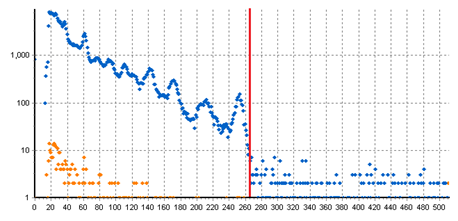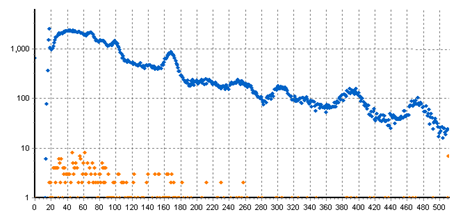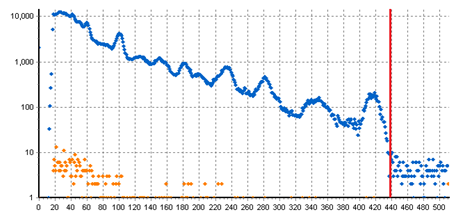Detector voltage
One of the most important settings for a gamma spectrometer is the detector voltage or high voltage. The detector voltage determines the amplification of the signal, which affects the mapping of the photo peaks onto the channels in the measured spectrum. When the detector voltage is increased, there is more amplification, and the photo peaks will move to higher channels numbers. Lowering the detector voltage has the opposite effect. For gamma spectrometry, it is important to set the detector voltage in such a way that all photo peaks fall within the monitored range, while still using most of the available channels. Temperature drifts may cause a similar shift in the position of the photo peaks, so care should be taken not to set the detector voltage too high.
The figures below show the effects of the detector voltage on a measured spectrum for a typical situation with 40K, 232Th and 238U. The Th photo peak at 2.6 MeV is located just left of the red line. With the correct detector voltage, this photo peak is near the edge of the spectrum. Some extra channels are reserved to make sure the red line does not fall outside the last channel when the temperature changes. As a rule of thumb, one should set the detector voltage such that the interesting part of the spectrum covers between 80 and 90% of the complete range.

Figure 1: Measured spectrum with the detector voltage set too low. Too many channels are used to record gamma radiation not from the interesting 40K, 232Th and 238U sources.

Figure 2: Measured spectrum with the detector voltage set too high, the Th photo peak falls out of the window and is not being logged.

Figure 3: Measured spectrum with the detector voltage set correctly.
